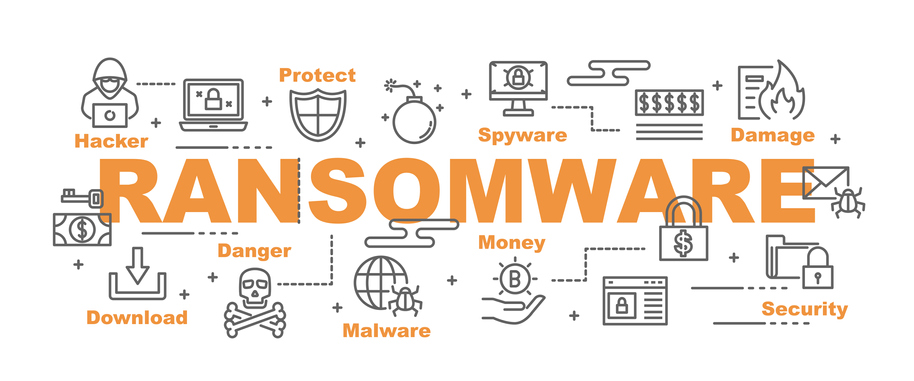
by Felicien | Apr 3, 2019 | Education
Businesses owners need to know important dates for personal and corporate tax filings with protection plans from any tax-related identity theft. Knowing how income is produced is smart for business leaders and the generation of income also goes with a reporting process. The income produced may be posted to personal tax returns and the best planning of generated income will go smartly with the protection of personal credit and finances. In 2016, $21 billion in tax refunds was stolen from the American population as a result of identity theft. Protection of assets, profits, employee records, and income are smart areas of focus for business leaders. What are the best ways to avoid tax-related identity theft? A priority for management is to protect company profits and personal data such as Social Security Numbers. Implementing the best procedures for employees and tax reporting is helpful with worker compensation reporting and considerations for any independent contractors. Correct planning throughout all of this can help you avoid any tax identify theft as another part of effective leadership.
High-Level Reviews for Companies and Business Leaders
Organizing your corporate books and reporting throughout the year can help you float easier through tax season with filing dates and proactive planning for the reporting process. A review of the business structure may be part of an evaluation for a company and business leaders. The business structure may determine the type of tax returns being filed. Working with an attorney or a CPA is a smart way of being prepared to discuss the appropriate business structure that works best for a company. Growth plans, employee numbers, income allocations, and tax reporting are considerations for some business leaders. Profit projections with possible international growth plans are additional considerations for some businesses and the structure should support the best ways to operate a business with protection and risk mitigation. Technology solutions should support the best corporate structure with management reporting and accounting procedures. Tax identity theft is avoided throughout the payroll process and the costs to reduce all risks can be simplified with smart planning and policies.
How does a business protect personal credit and finances?
Appropriate planning to calculate taxes, file returns, and make payments if necessary can help you avoid penalties and interest costs. Plans should include smart procedures for protecting personal data. Protection may consist of a thorough review to make sure there are no unauthorized loans, credit cards or other amounts using a false identity. Eliminating risks includes protection to ensure there is no need to freeze credit when tax-related identity theft occurs. Closely monitoring credit card charges, user accounts, and personal information is a smart choice for reducing any risks of tax-identity theft involved with a business. Two areas of focus will help reduce risks:
Employee record keeping and protection of personal data
Tax Reporting and protecting personal data from tax-identity fraud
Preparations include plans to know how technology is an answer to feeling confident about filing during tax season and steps to take for employee data protection. Business executives understand planning and organizing for operations, sales, and technology implementations. Technology reviews are important for data protection and security planning is smart business.
Protection Planning and Important Tax Dates
When is protection planning important for personal data such as Social Security Numbers? Business leaders that are preparing smartly for tax season also know to have policies and procedures to support protection of personal data for all employees. Technology systems, such as accounting and payroll software, should be checked often to eliminate any security breaches or digital data hacks. Also, the process of employee withholdings and reporting payments made to independent contractors are considerations with protection and tax dates. The following are some dates to consider for tax reasons.
January 31, 2019 is a deadline for sending out W-2 for your employees and filing with the IRS.
February 15th, 2019 is the deadline for issuing 1099s to independent contractors that received payments in 2018.
February 28, 2019 is important for businesses filing reports on 1099s for 2018.
April 1, 2019 is a date to know for filing 1099s electronically. If you are not filing electronically, the deadline is February 28th.
Knowing the 2019 tax dates can help you plan ahead and minimize the risk of any fraud or tax-identity issues. Data protection makes sure no thieves are filing fraudulent returns before the real taxpayers file their legitimate ones. Business executives can be applauded and look prepared when communication of risk prevention strategies are confirmed as optimized. The tax planning process may include work with a CPA or accounting firm. Confirming the due dates for the year is smart planning and having enough lead-time to file the tax documents should also include proactive procedures to protect credit and finances.
Payroll, Systems, and Processes
Payroll can be part of the reporting and tax planning. A planned out system to process payroll efficiently can help with tax reporting. Tax tables and employee records are part of the planning process with considerations, such as salaries, hourly rates, benefit payments, and tax withholdings. Companies with employees in multiple states may have different withholdings for taxes. Also, income withholdings for city and local taxes may be part of calculating gross and net pay. For many reasons, some companies choose to save costs and time by outsourcing payroll functions to a third party firm. The benefits of proper planning can be to develop better processes for making estimated quarterly tax payments. Important considerations include hiring and paying full-time employees and independent contractors. Organizing the best way can save money and time for busy company executives and managers. Correct planning may help with payroll processing, tax reporting, and determining the best technology solutions for business. Protection of your employee personal data should be a priority with communication to any involved third-party firms.
Eliminate expenses and time wasters of being forced into working with creditors and credit reporting agencies to clear any fraudulent activity and tax-related identity theft. Employee personal data should also be protected with a smart focus and strength as an employer. Victims of tax-identity theft may need to report it to both the IRS and the Federal Trade Commission. Other suggestions outlined in this guide https://www.thesimpledollar.com/protect-yourself-from-tax-identity-theft/ include applying for an identity protection PIN, a six-digit IRS number that will be used to confirm identity on all filings and tax returns. Employers should consider important policies for the protection of employee data. Business executives should understand the protection of credit and finances, and know how this applies to best practices throughout the organization. Tax-related identity theft should never trace back to a business that has smartly focused on data security plans.

by Felicien | Apr 2, 2019 | Education
Communication is essential for any business today. Being able to connect with colleagues and customers is critical for getting work done.
That means having a reliable, features-packed phone system that lets you communicate effectively while in and out of the office. Without a powerful business phone solution, you’re at a competitive disadvantage.
Below is a closer look at some of the advantages of having a reliable phone system for your business.
How Can A New Business Phone System Save Us Money?
Most older private branch exchange (PBX) phone systems are simply not built for today’s business needs. With PBX phones, you’re sending signals via older telephone lines and paying for each incoming and outgoing call. These per-call costs add up. Instead, a voice over internet protocol (VoIP) solution provides you with predictable monthly rates and unlimited call volume. You’ll also no longer have to pay to maintain and manage your phone equipment stored on location. Instead, users connect via an internet connection with cloud-based reliability and call clarity. PBX phone users typically pay for each line and any carrier costs or contractual change orders. If your power goes out, you also lose your phone system until the power is restored.
What Is Different About VoIP Systems?
There are many advantages to installing a VoIP system, including:
Call Clarity. With VoIP, your calls are transmitted via a high-speed internet connection, resulting in better call clarity and reliability.
Technical Support. Use a managed IT partner to oversee your cloud-based VoIP phone system, and you’ll have access to remote support, on-site support and maintenance, vendor management and asset tracking.
Comprehensive Security. With a trusted technology partner helping to implement and maintain your VoIP solution, you’ll know that a comprehensive approach to security is in place. The security measures may include:
Automated installation patches and updates
Network security
Monitoring 24/7 of all routers and switches
Traffic control and prioritization based on company-set policies
Non-compliant call detection and alerts
Toll fraud detection
Scalability. As your business grows, you need a phone system that can expand accordingly. VoIP systems allow for easy addition or removal of users, extension changes and other administrative changes from an intuitive dashboard interface.
Simple Set-Up. Transitioning to a new cloud-based phone system is a process with little to no user disruption. An adaptor can convert most existing desktop phones, which can then be plugged directly into your office internet connection. Both desk phone s and smartphones can access new features without the need for additional hardware purchases or installation.
What Are Some of the New Features VoIP Provides?
VoIP systems provide great features that will improve the way your team communications. Here’s a look at some of the most popular:
Unified Messaging. You’ll be able to access voicemails from any device when the messages are forwarded to your email account. You can retrieve the messages, listen to them and forward to the appropriate party no matter what device you’re using or where you are.
Find Me, Follow Me. If you want to be accessible no matter where you are, use this feature to have calls “follow” you from device to device. A caller may ring you first at your office and then have the call routed to your smartphone, your home office phone line or your hotel room while on the road. Providing this level of availability lets you serve your customers well with always-available access and connectivity. – your calls can ring at your office, then your cell phone, then your home office or hotel room while traveling – always maintaining the appearance that you are available to your clients.
Conference calling. Connect multiple parties internally and externally.
Connectivity. VoIP gives your company the ability to record phone calls and conferences. These files can be emailed to those who were unable to attend the session.
Automated phone attendants. Staff managing your phones will be able to manage incoming calls, see who is available and route calls as needed.
Desk-to-desk calling. Connect with colleagues in multiple locations by directly dialing extensions.
How Does VoIP Affect Smartphone Users?
Your phone system capabilities extend to mobile users using different devices and operating systems. You can use mobile applications to leverage many of the capabilities of your VoIP system, giving remote or traveling employees to connect easily to colleagues no matter where they are.
Choosing the right phone system is an essential decision for businesses of all sizes. Cloud-based phone systems give you the best options for today’s business needs.

by Felicien | Apr 1, 2019 | Education
Close to a million Michiganders are finding that their healthcare information may not be as secure as they thought it was, according to Michigan’s Attorney General Dana Nessel. Unfortunately, the personal health and financial information of these individuals were part of a massive ransomware attack on a third-party subcontractor who prints and mails bills for healthcare organizations in the area. While the attack happened back in September 2018, the far-reaching repercussions are still being identified over six months after the breach occurred. These unlucky individuals are discovering that a vast array of information was impacted, including social security numbers, dates of birth, personal addresses, names, medical information, phone numbers and even information about their insurance contracts. It took nearly three weeks for the contractor, Wolverine Solutions Group, to regain access to their data after the ransomware attack.
Healthcare Organizations Are Often Targeted by Hackers
Due to the high volume of personal, financial and health information available, healthcare practices and associated organizations such as Wolverine Solutions Group are often the targets of cyberterrorists. The information that is stored within the vaults of these companies is extremely attractive, both for the data points and the perception that healthcare organizations will pay handsomely to regain access to their crucial healthcare data in the event of a ransomware attack. Ransomware costs American small businesses more than $75 billion per year according to Datto, a staggering sum when you consider that this downtime can result in costs upwards of $8,500 per hour. Ransomware is increasingly becoming a part of the technology landscape, as cybercriminals perceive it to be a relatively easy and untraceable payday due to the rise of anonymous digital currency such as bitcoin.
Was the Record Encryption Strong Enough?
One of the questions that cybersecurity professionals are attempting to answer is whether or not the encryption that was applied to the records was enough to protect the records from the cybercriminals. In the case of ransomware, Wolverine Solutions lost access to their data for a period of approximately three weeks. During that period, it’s still unclear whether the cybercriminals attempted to break the data encryption — and if they were ultimately successful, where that data might have been shared with others or sold on the dark web. While a security firm brought into investigate initially felt that the attack was strictly focused on gaining ransom money, that has yet to be independently corroborated.
Patient Notification and Next Steps
Patients who were potentially affected are being notified by Wolverine Solutions Group, an expensive and time-consuming process as it requires multiple contact methods and a great deal of support. The organization is also providing complimentary credit monitoring and identity protection services for the affected patients, an additional cost that must be considered a part of the loss. These services will all be provided for the period of a year, while patients worry and wait — wondering if their personal health and financial information is in the hands of cybercriminals somewhere in the world. While Wolverine Solutions Group technology leaders note that they are taking steps to ensure that this type of attack doesn’t happen again, this negative publicity has likely affected their business in ways that will continue to be seen for years to come.
While it’s nearly impossible to create a system that cannot be breached, this instance illustrates the importance of having proactive, advanced backup and data protection processes in place. Cybercrime is rampant throughout the world, and there are no businesses that are truly immune from the effects of a major attack. Wolverine Solutions Group is merely the latest in a string of healthcare organizations that suffered from this type of aggressive ransomware attack and join Hollywood Presbyterian Medical Center and other large healthcare organizations in the growing list of targets.

by Felicien | Apr 1, 2019 | Education
Technology is continually changing, and keeping up with the updates to your crucial infrastructure and software can feel like an overwhelming task. Many organizations begin to look for an IT managed services provider as they start to scale, but how can you know who to trust? You’re placing your mission-critical systems and devices in the hands of a technology partner. Here are some key questions that you should ask any new IT services provider to determine if they will offer you the impressive level of service that your business deserves.
1. Your IT Services Provider Should Listen
While there are similarities between businesses in the same vertical, no company is exactly the same as any others. Your IT managed services professional should take the time to listen to your concerns instead of immediately offering cookie-cutter responses to the problem that they assume you have in your organization. A true partner will listen to your needs and then slot in their proficiencies to make your organization stronger and more resilient.
2. Have Availability That Meets Your Business Needs
Are all of your problems going to occur during working hours? Probably not — and your IT managed services provider (MSP) should have qualified resources available around the clock so your customers and staff aren’t left waiting in the event of a service outage. Carefully read through any offering contracts or service agreements to be sure that the response times meet the needs of your business before you make your final vendor selection.
3. Provide Recommendations for Key Strategies
Whether that means budgeting or disaster recovery planning, a true technology partner will always be on the lookout for ways that they could save you money or help improve the efficiency of your business. This could come during the budgeting cycle, when they let you know that some of your hardware could be replaced in the coming year. Another time that your IT managed services partner should help your business is by leveraging their knowledge of various industries to share best practices in backup and disaster recovery.
4. Retain Security Experts on Staff
Cybersecurity is a constantly changing realm, and it would be very challenging for a single staff member to keep up-to-date with security advances as they’re made available. Keeping software patched and hardware updated is also a very time-consuming task, making these two ideal ways to leverage your managed services provider. You should be able to feel confident that your MSP is regularly running security tests and actively monitoring for hacks.
5. Proactively Update and Test Your Systems
The time when you could rely on reactive technology management to maintain the security of your systems and data is gone. Instead of waiting for something to break, your services provider should be actively seeking upcoming updates and creating a schedule for an application that is consistent with the needs of your business. This will help your business stay on the right track for reliable growth in the future.
6. Help Appropriately Scale Your Business Infrastructure
Making a single wrong decision early in a technology build-out can have disastrous consequences down the line. Your IT managed services provider should have the experience with businesses similar to yours that allows them to peek into the future and curtail any decisions that might cause your business to be less flexible or scalable in the future. While customizations are nearly inevitable when it comes to technology, a truly remarkable services provider will look for and recommend tools that are an exceptional fit for your business first — before they recommend expensive platform changes.
Finding the best IT managed services provider requires time and trust on both sides, but everything starts with open dialog. Your team must be able to detail your current needs as well as how your business is expected to scale in the future as well as a rough timeline. Your IT services provider should be able to tease these details from your project team so you have a shared understanding of how to move forward in lockstep. From a deep understanding of cybersecurity to a willingness to listen to your needs: an awesome IT managed services provider is not a mythical creature!

by Felicien | Apr 1, 2019 | Education
Successful businesses require smart leadership. How does a company effectively protect its profits? Planning for profits should also include company-wide management of expenses and security planning is high on the list. If the average ransomware payment has reached close to $15,000, a company’s leaders would want to plan ahead and ensure all security best practices for backups, network systems, cloud storage, and servers. Real profits include all revenues with an understanding of cost allocations for a business. Effective technology solutions can help make sure the right focus is on the products or services with higher profit margins. Security planning fits nicely with successful leadership, along with prevention plans to reduce all risks. Eliminating any unnecessary expenses from ransomware attacks could allow better allocations for salaries, employee satisfaction, company reinvestments, and provide improved planning for sales and profits.
How do you put a cost on employee reassurance for successful security planning? Do not allow a ransomware attack to affect your profits, employee satisfaction or customer confidence. How can you improve customer satisfaction with your plans for security? Employees and customers can benefit from understanding the successful planning for eliminating all security risks. Smart leadership with security planning includes documentation for policies, procedures and adequate communication for employees. Employee training should consist of documentation that clearly outlines security requirements. Employee retention and job satisfaction may not seem completely quantifiable but effective leadership is able to provide the best planning for staff morale.
Security planning
Effective leadership includes communication strengths, simplified technology solutions, employee support, and operational planning for client satisfaction. Marketing, client support, and branding require appropriate security planning and any security issues, such as ransomware attacks, are disallowed. On-demand support is important for employee support and client satisfaction. Security planning should be the focus of any customized IT services and flexible technology solutions. Support plans may include additional hiring and training for technicians. Packaged solutions and IT managed services are easily researched with the correct leadership involved and reviews of the cost-benefit analysis. Effectively managed IT support can help prepare a company for leading-edge technologies, cost savings, and marketing strategies. The improved promotions for profitability are part of the smart leadership of a successful business.
Business growth
A company’s growth can be comfortable for leadership teams and employees. Appropriate planning would be for new hiring, cost management, accounting and administration, and information security. A company’s asset allocations for new hires are a smart focus for scalable business growth. Support for the human resources departments can help simplify the hiring process, training procedures, and employee effectiveness. The technology staff and any partners for technology solutions should be high on the priority list for smart business growth. Technology teams can be some of the best for effective cost management, profitability, operations planning with sales projections, and marketing priorities. Experienced IT consultants can help with planning and success throughout a company.
Expense management
Appropriately allocating expenses with accounting and administration is an effective strategy. Technology teams and business executives are able to better focus on profitability and growth strategies. A thorough understanding of staffing needs is improved with effective expense management reviews. Some of the expenses and cost projections to consider include the following:
Employee expenses including computers, mobile devices, and salaries
Administration overhead with product and services support
Technology costs with security planning, salaries, commissions, and partnership agreements
Asset allocations and maintenance costs
Trained technicians and experience with cost cutting are improvements for the business
Product development expenses and allocated costs with packaging, distribution, and promotions
Sales and marketing costs are monitored continuously for profitability and growth projections
Costs for press promotions, media announcements, and public relations
Social media support with company messages and communication plans
Regular security assessments
Reviews can include usability of information systems and an analysis of graphical user interfaces for all technology implementations with user access. Smart leadership could consist of a review of the regular security assessments for planned improvements, user support, and communication enhancements. Confirmation of success is smart for operations and client reassurance. Sales and marketing teams can use healthy reporting to demonstrate successful planning for security procedures and privacy of client information. Looking organized is also part of effective management with security reviews and regular assessments. Security plans should be a part of expense management and corporate planning.
Network administration
The salary for a network administrator is important to review often for effective leadership and employee planning. “An in-house network administrator can cost your business somewhere around the salary range of $45,000 to $80,000”, https://www.payscale.com/research/US/Job=Network_Administrator/Salary. Having the right successful leadership in place is a smart way to manage all business expenses and plan for successful growth. Working with the managerial staff, the network administration team can prepare the best documentation for employee training and new hiring processes. As some of the smartest planning for sales and marketing promotions, smart plans for the employees can help improve profitability for a business. Smart priorities can help assure employees are impressed with a company’s plans for success and business growth. Security planning can be improved with communication of the policies for networking, backups, remote access, client information, and employee administration.
Employee training
Training can be helpful for all employees, including new hires. Plans to prepare training can include impressive presentations or documentation to impress potential or current clients. The best type of training for technology and information systems, such as security plans, can easily be prepared to benefit the entire company. Communication with all levels of employees is friendlier with documentation or reports highlighting prevention plans and confirming the correct policies for security. Risk assessments and security reviews can foster better communication with employees or clients. The focus can benefit plans for profits and sales successes.
Successful planning to completely dismiss any risks of ransomware attacks is smart business. Preparing for profits and protecting your business work are good leadership plans. The appropriate planning can be appreciated by business executives, business owners, and managers. Confirmation of the best preparation for salaries and commissions is important for the network administrators and the entire staff for a company. Having the right leadership in place can help reduce all security risks and eliminate unneeded expenses of any cyber attacks or vulnerabilities.




